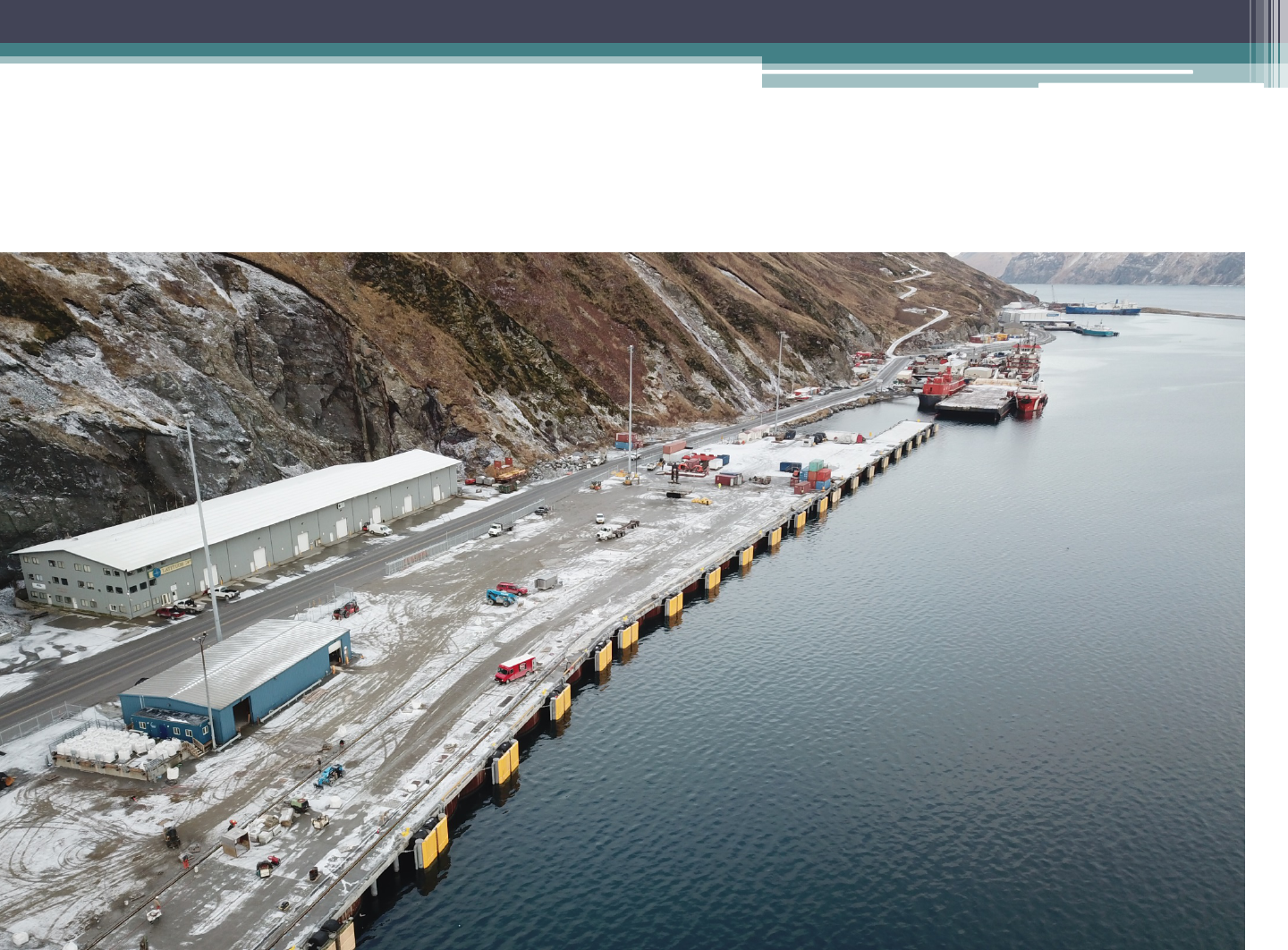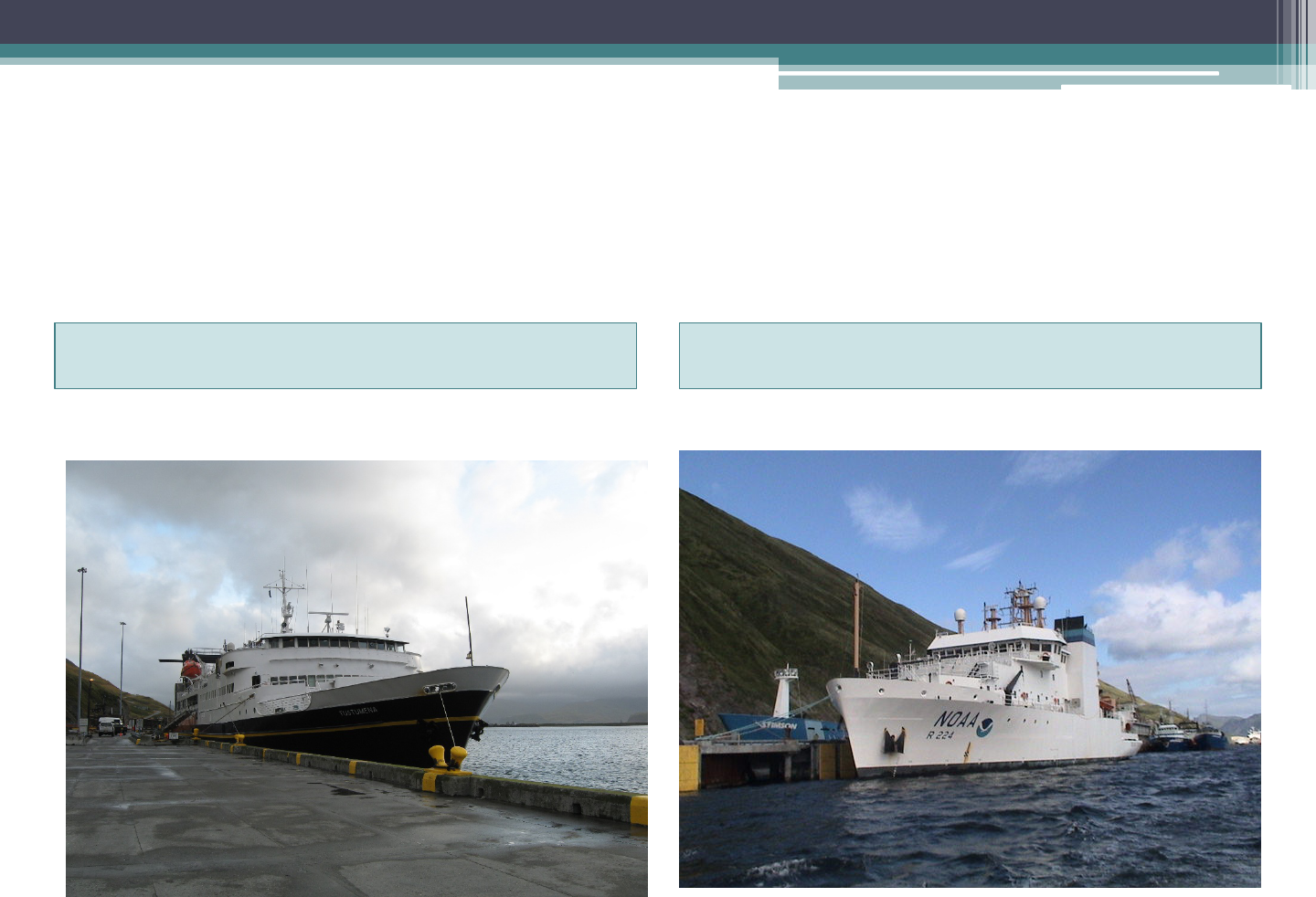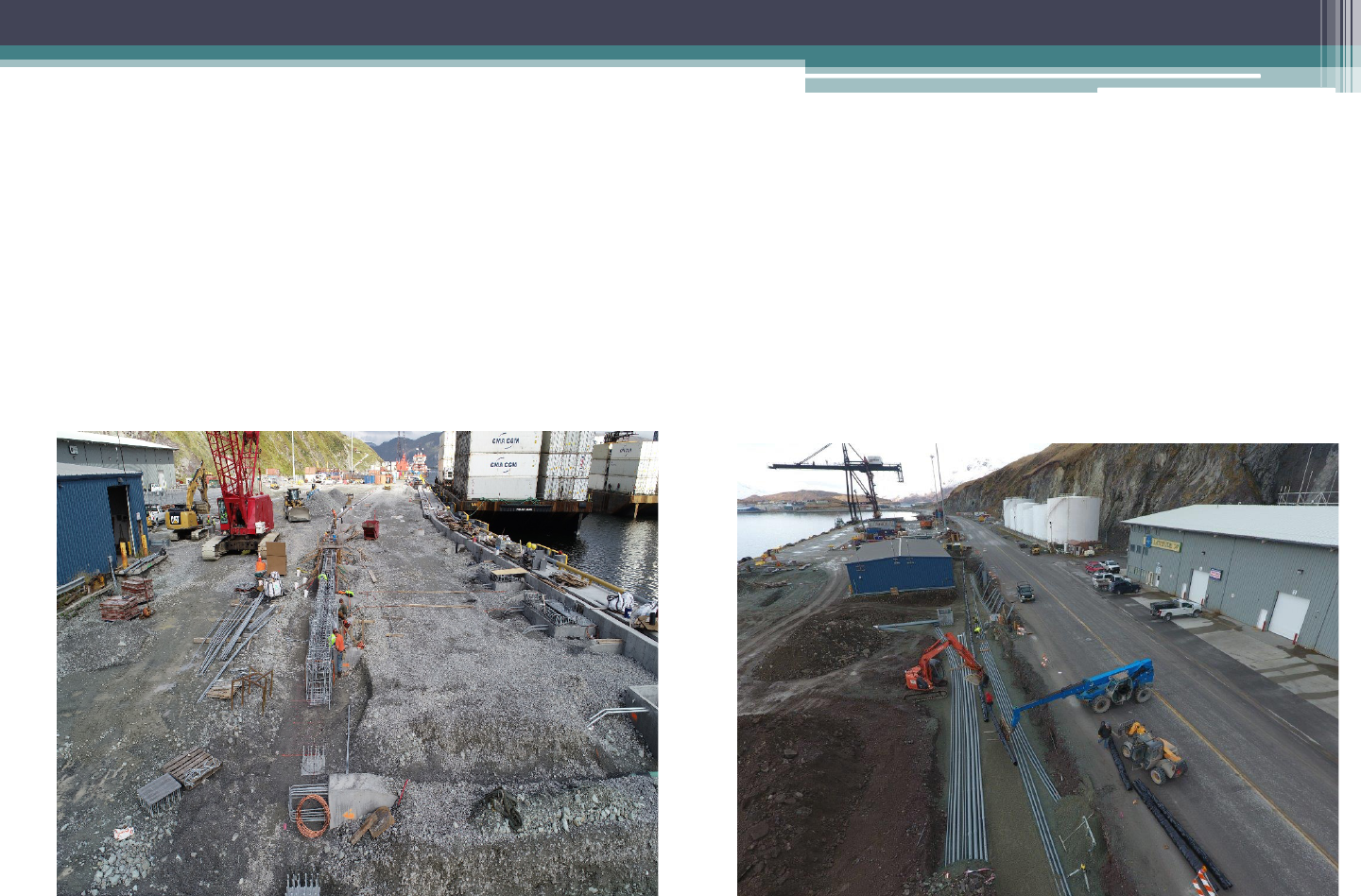
Terminal Services Agreements-TSA
The Port of Dutch Harbor promotes the growth
and health of the community of Unalaska
through the planning, development, and
management of marine related municipal
properties and facilities to provide moorage and
other marine services on a self-supporting
basis.
Mission:

Terminal Services Agreements-Goals
Provide an Overview to Council for:
• The framework for Port Operations
• The Customer Base
• The Infrastructure of Unalaska Marine Center
• The purpose of a Terminal Service Agreement
• The components of a Terminal Services
Agreement and structuring and RFP

Terminal Services Agreements-Goals
Council to provide direction forward for:
• Future Public Access
• Structure of RFP for Agreements
• Term of agreements
• Long-range considerations

Terminal Services Agreements-Framework
• Unalaska Marine Center and the Federal
Maritime Commission
• Port Registration
• Federal Shipping Act and the Port of Dutch
Harbor
• Unalaska Code of Ordinances and Terminal
Service Agreements

Terminal Services Agreement-Customers
570 individual Vessel Calls
Estimated 65000 containers moves
28,000,000 Gallons of Fuel
450,000 tons of cargo
8000 passengers

Terminal Services Agreements-Customers

Terminal Services Agreement-Customers
Tustumena NOAA

Terminal Services Agreement-
Customers
USCG Fuel Tanker & Northern Hawk

D7 during Construction Fishing Fleet

Terminal Services Agreements-Infrastructure
• 6 Acres uplands
• 2051 Linear feet of dock space
• 800 Feet of Crane Rail
• 3 New Fresh Water hook-ups
• 7 New Fuel Vaults
• 1 New Sewer hook-up
• 2000 Feet Port Security Fence
• 168 Hours weekly for scheduling windows

Terminal Services Agreement-Infrastructure
• Fuel lines • Crane Rails

Terminal Services Agreement-Infrastructure
• Pile supports and rebar for Crane
rails
• Electrical conduit for pedestals

Terminal Services Agreement-Infrastructure
What is at the heart $40,000,000 project?
• Crane rails and room for additional crane service
• Electric cable trough for crane rail
• Electrical conduit for future pedestals
• Surfaced, clean, durable uplands with load
capacity
• Access to a deep draft docking facility

• What is a Terminal Service Agreement?
• When are Terminal Service Agreements
beneficial?
• How does this work with our Port practices?
• Who benefits?
• What is the process for negotiating agreements?
Terminal Services Agreements-TSA

Terminal Services Agreements-TSA
• Benefits to the User
▫ Consistent operational window
▫ Predictable rates
▫ Continuity for capital investment
• Benefits to the Port
▫ Management of facility
▫ Manage debt service
▫ Predictable Revenues
▫ Framework for management of growth

Terminal Services Agreements-TSA
6 Responders interested in agreements
6 Committed berthing windows
1 Seasonal berth
2.75 Acres total requested for yard space
3 Requested to pay below Tariff
2 Indicated they would pay Tariff
1 Non-Response in regards to rates
Vessel LOAs vary from 150’- 965’

Terminal Services Agreement- Components
Determining the goals of the dock
• Honoring the existing agreements
• Maintaining Public Access
• Utilizing function of existing infrastructure
• Developing future infrastructure
• Revenue

Terminal Services Agreement- Components
Structuring the scoring criteria for the RFP
• Land
• Time at the dock
• Volume
• Commodity
• Vessel Calls
• Relationship with the Port
• Proposed Term of Agreement
• Proposed use of new infrastructure
• Ability to meet City’s criteria for FSP, Public Access, and existing
agreements

Terminal Services Agreement- Components

Terminal Services Agreement- Components

Terminal Services Agreement-Options
RFP possibilities
• Request for land leases only
• Request for Land leases and berthing
agreements
• Request for a bid for an outside entity to manage
the dock
• No requirement to request proposals

Terminal Services Agreements
Discussion and Questions
